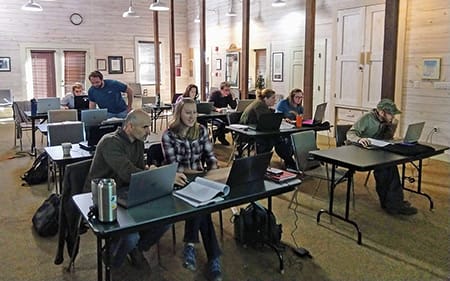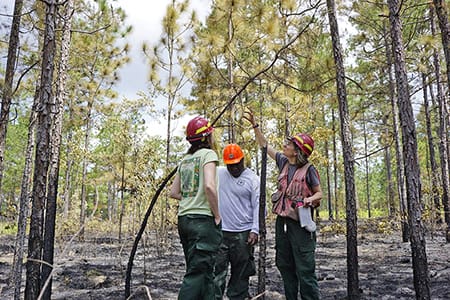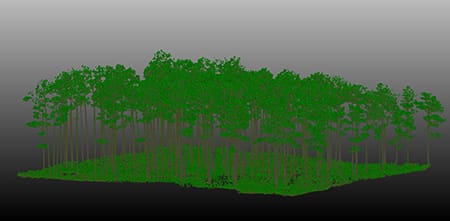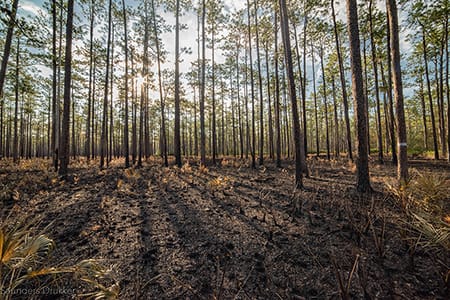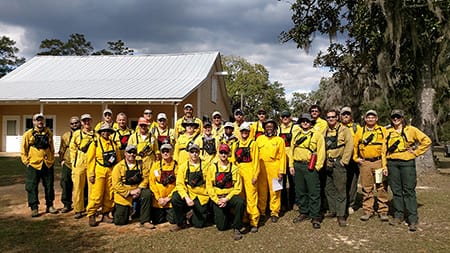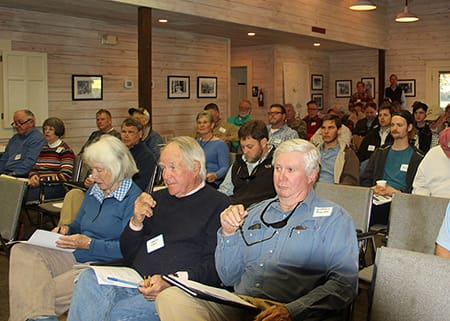Have you ever heard the saying “you are what you eat”?
In a recent study published in Food Webs, Tall Timbers’ Rob Meyer and Mississippi State University’s Dr. Scott Rush took this saying literally as they reconstructed the diet of southern flying squirrels in an effort to better understand how they interact with the endangered red-cockaded woodpecker.
While researchers at Tall Timbers have shown that red-cockaded woodpeckers provide a keystone function in providing cavities that are used by critters, flying squirrels can displace the woodpeckers and overstay their welcome.
The southern flying squirrel may spend months or longer in the woodpeckers’ cavities. This leaves the woodpeckers without a place to roost at night leaving them vulnerable to the elements as well as hungry owls.
In the Red Hills region, the southern flying squirrel can range from rare to frequent occupants in woodpecker cavities.
An occasional squirrel isn’t much of a big deal when there are many other suitable cavities nearby. But in areas where biologists are reintroducing the red-cockaded woodpecker the number of cavities are often limited. This makes squirrels a particular problem for woodpecker reintroduction efforts.
Knowing something about their diet can help answer why these squirrels are so keen on being in the woodpecker’s pinelands.
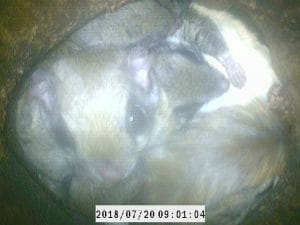
Six southern flying squirrels occupy this otherwise suitable red-cockaded woodpecker cavity.
While squirrels are mainly known to consume acorns and hickory seeds, the southern flying squirrel is believed to be the most carnivorous squirrel in North America, consuming insects and, as noted by Herbert Stoddard, can even eat birds and carrion.
Given this, conservationists are concerned that these squirrels may frequently consume the eggs of the red-cockaded woodpecker, making them an even greater threat than just taking a cavity for themselves. So, of this wide array of foods, which ones are squirrels actually eating, and how often?
That’s where stable isotope analysis comes in.
The test is complex, but the premise is simple.
Isotopes are heavier, naturally occurring versions of elements. Every food item has a particular ratio of isotopes that, when eaten, gets used to build and replace tissues. Thus, by taking a blood sample and a sample of the possible foods eaten, we can estimate the likely mixture of foods that were consumed (hence, ‘you are what you eat’).
Rob and Scott’s research showed that flying squirrels found in woodpecker cavities of Mississippi and Alabama primarily consume plants such as acorns and hickory nuts, and rarely if ever consumed birds or their eggs. If they did, the amount of isotopic nitrogen would have been much higher.
With this information, conservationists can feel confident that squirrels likely occupy woodpecker cavities for the cavity itself and probably not for the woodpecker’s eggs.
Perhaps with fewer oaks and hickories, the woodpecker cavities may be a less appealing home for squirrels that may need to travel further for the foods they like. Providing artificial cavities for the squirrels (such as modified bluebird boxes) while also reducing hardwoods could give land managers a way to prevent squirrels from displacing these important woodpeckers.








